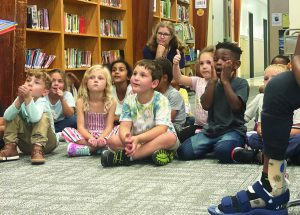Our Mission
The Menands School District, in partnership with students, teachers, parents and the community, is committed to excellence. We prepare students to excel in all areas of learning, encourage them to respect cultural diversity, and expect them to become valued members of society. We strive to develop life-long learners within a safe, nurturing and supportive environment. By creating innovative, well-balanced programs that challenge the unique abilities of all students, we are able to nurture each child’s potential. We are educating the leaders of tomorrow and believe that children come first.
Our Vision
The Menands School will continue to build a top performing learning community where students discover and reach their individual potential through robust and challenging programs that maximize the personal connections that can be achieved in a small school environment.
- A Message From The Superintendent
- What is a Strategic Plan
- Goal 1: Student Achievement and Success
- Goal 2: Social-Emotional Learning
- Goal 3: Diversity, Equity & Inclusivity
- Goal 4: Fiscal Responsibility
- Strategic Plan Task Force/Committee Members
A Message From The Superintendent
Dear Community Members,
I am so pleased to be able to share with you the recently Board approved Strategic Plan that will guide the district over the next five years. This plan was thoughtfully developed by a comprehensive constituent group to align with our district’s Mission & Vision.
Specific Action Steps have been created which align with our overarching District Goals of: student achievement and success; social-emotional learning; diversity, equity and inclusivity; and fiscal responsibility.
I am confident that our exceptional faculty, staff, board members and school community will use this plan as a road map/compass to chart an amazing course for our school and district, resulting in tremendous opportunities and success for ALL students, while remaining fiscally responsible to our extended school community.
Ongoing updates will be provided throughout the duration of the plan, so all involved can celebrate our successes, and continue to learn and grow through the work.
I look forward to our collective efforts to bring the plan to fruition and to the positive impact it will have on our school community, and most importantly the children of the Menands Union Free School District!
Sincerely,
Jennifer Cannavo
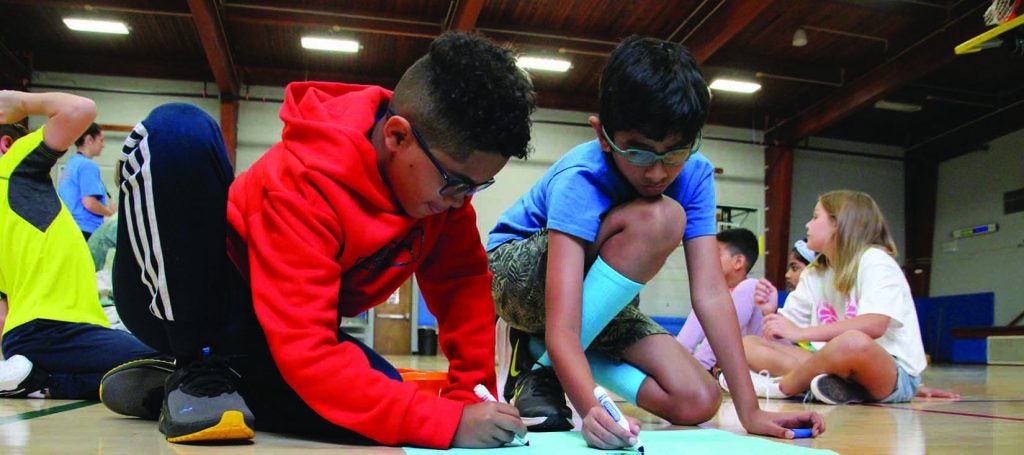
What Is A Strategic Plan
The purpose of a strategic plan is to provide a framework for an organization, in this case a school district, to be able to achieve its goals. This Strategic Plan is rooted in the overarching goals established by the Board of Education in Winter of 2021, through their work with the New York State School Boards Association (NYSSBA).
Those goals were then considered, by a group of faculty, staff, parents and community members, as they worked with the Capital Area School Development Association (CASDA), to not only develop the Action Steps included, but to determine: who would be responsible for each, adequate time frames in which to conduct the work, and a mechanism for determining evidence of success.
In the case of this particular Strategic Plan, great care was taken to align with the Board of Regents DEI Frame- work and the simultaneous work being done by the district’s Diversity, Equity & Inclusivity Committee.
This Strategic Plan outlines specific Action Steps targeted to each of the district goals, identifying responsible parties, the dates by which each step will be achieved, and how evidence of progress will be measured. In many cases the steps are scaffolded, or built upon one another, ultimately resulting in the desired outcome. To that end, the format of the plan allows us to measure our success incrementally and along the way, and if need be to adjust accordingly, so we can ultimately achieve our overarching goals.
Progress will be monitored and shared regularly with our Board of Education and broader school community, over the duration of the plan.
Goal 1: Student Achievement and Success
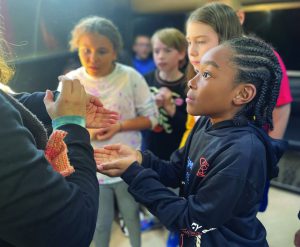
Our school community will provide the necessary supports and opportunities for proficiency and success among our students. Faculty and staff will have the knowledge and skills to develop and implement curriculum and instruction that meet the unique needs of all learners.
Outcome 1
By June 2026, content areas will have standards-based curriculum, including cross-curricular mapped units, which include standards, prioritized outcomes, progression of learning targets and summative success.
Action Steps
- A DRAFT* Scope and sequence and progression of learning targets based on prioritized standards will be developed for Math K-6, one grade level of each MS Content Area, one grade band for special area teachers, in conjunction with grade level support team.
- 2022-2023
- A DRAFT* Scope and sequence and progression of learning targets based on prioritized standards are developed, opportunities will be identified where cross curricular planning and development can occur . As these opportunities arise they will be further developed and implemented.
- 2022-2026
- A DRAFT* Scope and sequence and progression of learning targets based on prioritized standards will be developed for ELA K-6, a second grade level of each MS Content Area, a second grade band for special area teachers, in conjunction with grade level support team.
- 2022-2024
- A DRAFT* Scope and sequence and progression of learning targets based on prioritized standards will be developed for science K-6, the third grade level of each MS Content Area, a third grade band for special area teachers, in conjunction with grade level support team.
- 2022-2025
- A DRAFT* Scope and sequence and progression of learning targets based on prioritized standards will be developed for social studies K-6, any additional grade levels of each MS Content Area, any additional grade band for special area teachers, in conjunction with grade level support team.
- 2022-2026
*Note: Upon development, DRAFTS will be assessed for effectiveness and updated as needed based on data and in accordance with subsequent outcomes under this goal.
-
March 2023 progress report for Goal 1 Outcome 1, click here
Outcome 2
By June 2026, teachers will be using learning targets daily in instruction, including standards alignment with success criteria, unpacking with students, engaging during instruction, and using formative and summative aligned assessments to inform lesson adjustments and student understanding.
Action Steps
- Introduce new learning in staff meetings around learning targets that is then applied through the month in individual classrooms . Teachers will collect evidence of application and through informal walkthroughs . Evidence will be reviewed and teachers will make adjustments as needed.
- 2022-2023
- Create learning targets for units of study in ELA and math that are aligned to success criteria and formative assessments . Provide teachers the opportunity to visit each other’s classrooms utilizing reflection protocol.
- 2022-2024
- Working with a grade level team, refine learning targets within units of study/progression of learning targets and formative assessments . Prioritize the learning targets to identify the most essential skills and design scaffolded resources to support Tier 2 students.
- 2022-2025
Outcome 3
By June 2026, Menands School will fully implement a Multi-Tiered System of Supports (MTSS) so teachers and staff can screen/identify appropriate and targeted intervention pathways for struggling students.
Action Steps
- Create a DRAFT K-8 MTSS/Response to Intervention (RTI) guide that includes, benchmark data protocols, expectations, and indicators for Tier 1, Tier 2 and Tier 3 including when students would be referred to IST and what data they would need to bring to the committee.
- 2022-2023
- Initial Implementation of RTI system, and add in behavioral component after a year of full implementation of SEL curriculum and Responsive Classroom . Review each step of the process with the team.
- 2022-2024
- Full implementation of the MTSS plan that is inclusive of behavioral components . The RTI committee meets to review trends and classroom subgroup data to identify shifts and new learning needed to maximize growth.
- 2022-2025
-
March 2023 progress report for Goal 1 Outcome 3, click here
Outcome 4
By June 2026 faculty will engage regularly across the school year in data review cycles including grade level and full faculty review.
Action Steps
- Trend data, by subgroup population, will be reviewed during a faculty meeting to identify subgroups for focus and progress will be monitored through classroom based assessments where students can access their individualized learning path.
- 2022-2023
- Review past year data during faculty meetings including trends in subgroups previously identified using the notice/wonder protocol . Foll-owed by purposeful review of data by subgroup 1x a month during congruency and shared with the MTSS group to review and compare against referrals.
- 2022-2024
- Establish and implement a consistent Data Driven Instruction (DDI) process for continued check-in and review MTSS data alongside classroom data to look at subgroups . Then refine inconsistencies and align units of study with identified gaps within focus subgroup areas to ensure an equitable system.
- 2022-2025
-
March 2023 progress report for Goal 1 Outcome 4, click here
Goal 2: Social-Emotional Learning
We are committed to the development of the whole child by engaging students, staff, and families in opportunities that create and foster a safe and supportive school community.
Outcome 1
By June 2026 all teachers and staff will be employing the Responsive Classroom Model and Fly 5 (Social Emotional) Curriculum to support a consistent schoolwide commitment to a safe, healthy and nurturing learning environment, enhancing staff ability to identify, mitigate and minimize behaviors interfering with student learning.
Action Steps
- All staff will be provided the opportunity to participate in Life is Good professional development opportunity focused on trauma informed practices and self care.
- 2022-2023
- All instructional staff will have successfully completed the initial, comprehensive Responsive Classroom Training (Elementary and/or MS Core Course).
- 2022-2023
- Dedicated time will be included in the schedule, and all K-5 classroom/homeroom teachers and 6-8 homeroom teachers will be conducting Morning Meeting or Advisory consistently across the school year.
- 2022-2024
- Special Area Teachers will be partnered with classroom/homeroom teachers to co-facilitate morning meeting and advisory to the extent the schedule allows.
- 2022-2025
- Staff who piloted Fly 5 in the 21-22 school year will serve as turnkey trainers for those who have not yet implemented the program.
- 2022-2024
- All homerooms K-5 will complete the beginning of the year assessment for Fly 5 and implement lessons twice a week.
- 2022-2024
- Fly 5 will be fully implemented in grades K-5.
- 2022-2025
- All homerooms 6-8 will complete the beginning of the year assessment for Fly 5 and implement lessons twice a week.
- 2022-2025
- Fly 5 will be fully implemented in grades 6-8.
- 2022-2026
-
March 2023 progress report for Goal 2 Outcome 1, click here
Outcome 2
By June 2026, methods of successfully communicating with all families will have been identified and implemented.
Action Steps
- Conduct surveys to assess current communication systems in place in the classroom, school and district. This will include surveying staff, and parents relative to the systems currently in place and the information conveyed, and their perceived value and effectiveness.
- 2022-2023
- Conduct a comprehensive review of the survey results to identify effectiveness of current systems and content at all levels.
- 2022-2024
- Participate in an exploration of communication platforms available to teachers, schools and districts to identify those not currently being utilized that may be of value for consideration.
- 2022-2024
- Identify, secure if needed, and provide training in protocols that have been identified for use at the classroom, school and district level.
- 2022-2025
- Pilot identified platforms using select staff who will ultimately provide turnkey training.
- 2022-2025
- Full implementation of selected communications platforms and protocols.
- 2022-2026
- Survey parents and staff to assess the effectiveness of newly implemented communication platforms and protocols.
- 2022-2026
-
March 2023 progress report for Goal 2 Outcome 2, click here
Outcome 3
By June 2026, the purpose and membership of the Wellness Committee will have been reviewed and revised to better support and promote the wellness of students and staff.
Action Steps
- Review and assess committees (and membership) required by policy, NYSED, or education law, as well as those historically in place in the district.
- 2022-2023
- The Health and Wellness Committee membership will be identified and come together for regularly scheduled meetings.
- 2022-2023
- The Health and Wellness Committee membership will develop, deploy and review a climate survey to establish needs of students and staff.
- 2022-2024
- The Health and Wellness Committee membership will create a plan to address the needs identified in the climate survey.
- 2022-2025
- The Health and Wellness Committee will implement the plan created to improve the health and wellness of students and staff.
- 2022-2026
- Continued implementation and assessment of the plan created to improve the health and wellness of students and staff.
- 2022-2026
-
March 2023 progress report for Goal 2 Outcome 3, click here
Outcome 4
By June 2026, student support services will have identified and implemented a protocol to identify student (particular, specific, unique, circumstantial) needs, communicate those needs with relevant staff, and plan collectively to address those needs.
Action Steps
- Support Services (school counselor, social worker, psychologist, nurse) will work with administration to assess and refine current roles and responsibilities relative to identifying and communicating students’ needs and collectively addressing them.
- 2022-2023
- Support Services will identify the information needed to identify student needs and what different staff members may need to know through a review of student case studies and survey of staff.
- 2022-2023
- Support services will develop a protocol to identify student needs and how to communicate those needs to staff.
- 2022-2024
- Support services will develop a protocol to address and review student needs with relevant staff once they are identified to proactively support students.
- 2022-2025
- Full implementation of the developed protocol along with continued assessment and revisions in accordance with changing student needs.
- 2022-2026
-
March 2023 progress report for Goal 2 Outcome 4, click here
Goal 3: Diversity, Equity & Inclusivity
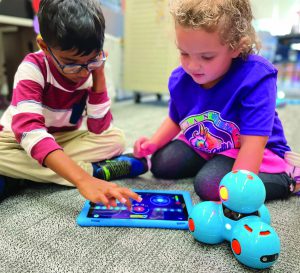 Recognizing the diversity of our student body the MUFSD is committed to the growth and development of our school community to provide an equitable education for all students that eliminates race, ethnicity, class, gender identity, sexuality and disability as predictors of student success, and creates a community where all members feel valued.
Recognizing the diversity of our student body the MUFSD is committed to the growth and development of our school community to provide an equitable education for all students that eliminates race, ethnicity, class, gender identity, sexuality and disability as predictors of student success, and creates a community where all members feel valued.
Outcome 1
By June 2026, the district will identify and implement consistent professional learning aligned with Diversity, Equity and Inclusivity (DEI).
Action Steps
- All instructional staff, and administrators will participate in a book study of “Culturally Responsive Teaching and the Brain.”
- 2022-2023
- Review of work product from the book study to identify steps to be implemented to create more culturally responsive classrooms.
- 2022-2023
- Planning, inclusive of professional development, and implementation of identified steps resulting from book study and subsequent review.
- 2022-2023
- All instructional staff, and administrators will participate in a book study of “Grading for Equity.”
- 2022-2024
- Review of work product from the book study to identify steps to be implemented to create more equitable grading practices.
- 2022-2024
- Planning, inclusive of professional development, and implementation of identified steps.
- 2022-2026
-
March 2023 progress report for Goal 3 Outcome 1, click here
Outcome 2
By June 2026, the district will implement equitable and inclusive practices for assessing and meeting school and community needs.
Action Steps
- The district will seek out opportunities to conduct bias training, for faculty, staff, board, and PTA leadership.
- 2022-2023
- Schedule and conduct bias training.
- 2022-2024
- Identification of a means of ongoing training for new hires.
- 2022-2024
- The district will research options for a comprehensive equity audit of all resources, instructional practices and opportunities.
- 2022-2023
- The district will schedule and conduct the equity audit of all resources, instructional practices and opportunities.
- 2022-2024
- Upon completion of the review and subsequent report, implement suggested recommendations to curriculum and material.
- 2022-2026
-
March 2023 progress report for Goal 3 Outcome 2, click here
Outcome 3
By June 2026, the district will implement systems (policies, practices, and protocols) to promote an equitable and inclusive school climate to insure the diversity of our school community is valued and respected.
Action Steps
- The district will complete a comprehensive review of all board policies through the lens of diversity, equity and inclusivity.
- 2022-2023
- In particular, the district will review and revise the Code of Conduct to reflect equitable and inclusive practices, and to include restorative practices.
- 2022-2023
- Implementation of the revised Code of Conduct to reflect equitable and inclusive practices, and to include restorative practices .
- 2022-2024
- The district will provide professional development aligned with implementation of restorative practices.
- 2022-2024
- Consideration of the development of the school calendar to reflect the diversity of our school community.
- 2022-2024
- Professional learning resulting from the bias training and equity audit will be incorporated into recruitment and hiring practices.
- 2022-2026 and beyond
- Inclusive and equitable practices across all aspects of our school community are purposefully embedded as opposed to only episodic.
- 2022-2026 and beyond
-
March 2023 progress report for Goal 3 Outcome 3, click here
Goal 4: Fiscal Responsibility
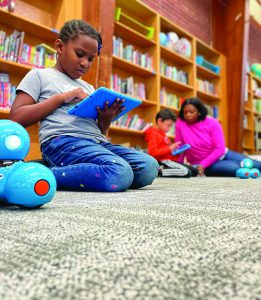 To prudently manage existing district resources to maximize opportunities for students aligned with district goals while advocating for increased funding to better support the needs of our school community .
To prudently manage existing district resources to maximize opportunities for students aligned with district goals while advocating for increased funding to better support the needs of our school community .
Outcome 1
By June 2026, all budget development and consideration, including additions or reductions should be made in consideration of district goals 1-3, and proposed funds allocated accordingly.
Action Step
- Budgetary considerations, including maintenance, additions, and reductions will be considered in accordance with established goals, the Strategic Plan and in consideration of tax payers.
- 2022-2026
Outcome 2
By June 2026, the district will advocate in alignment with goals to maximize understanding of our unique circumstances and needs, and in consideration of tax payers.
Action Step
- The district will advocate consistently with elected officials, to assure they fully understand the unique circumstances of our district and the fiscal implications.
- 2022-2026
Strategic Plan Task Force Members:
This work was a joint effort of the Board of Education, the Strategic Planning Committee, and the district’s Diversity, Equity & Inclusivity Committee, participants included:
- Kathleen Wylie, Principal
- Andi Delancey, Board of Education member
- John Diefenderfer, Board of Education member
- Lauren Hayes, K-8 Music Teacher
- Courtney Jaskula, Board of Education member
- Jayme Keppler, Elementary Teacher
- Jennifer Cannavo, Superintendent of Schools
- Vanessa Mercado, Parent
- William Nevins, Board of Education member
- Joseph Nuss, Parent
- Cheri VandenBerg, School Counselor
- Meghan Widrick, Coordinator of Pupil Personnel Services
- Jen Wilson, Community Member
Special thanks to the following organizations who assisted the district in this endeavor:
- The New York State School Boards Association
- The Capital Area School Development Association
- Progression Partners
- Capital Region BOCES Educational Support Services
- Center for Responsive Schools

